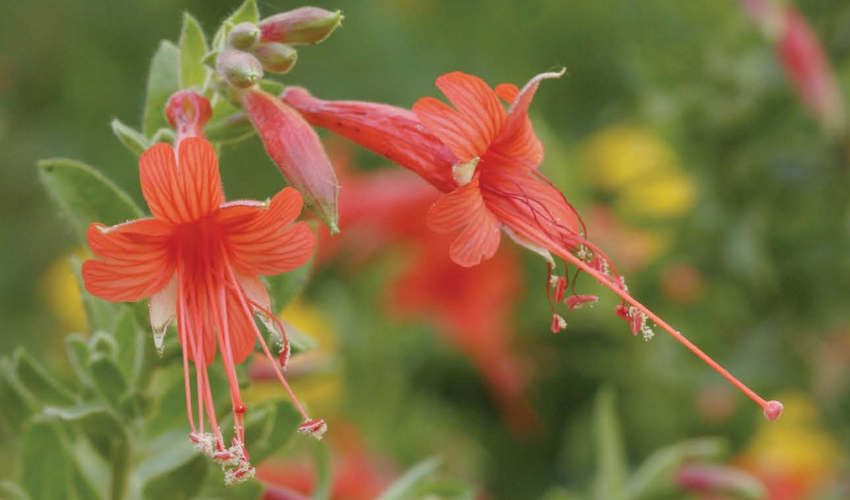
Let’s Take a Look at 10 Amazing Wildflowers of Arizona
Arizona is a great place for wildflower enthusiasts! From high mountains with cool pine forests and refreshing streams to the driest and hottest deserts, Arizona is home to a unique variety of wonderful wildflowers. In their field guide, Wildflowers of Arizona, Nora Bowers, Rick Bowers, and Stan Tekiela make wildflower identification simple, informative, and productive. Fact-filled information contains the particulars that you want to know, while full-page photographs provide the visual detail needed for accurate identification. Here are 10 facts about a variety of the Wildflowers of Arizona.
Franciscan Bluebells: This tall plant is common along streams, in moist meadows, and in forest clearings. It grows as a single plant, in small groups, or in large dense colonies with hundreds of blooms. Franciscan bluebells can be found on the San Francisco Peaks, the tallest mountains in Arizona. These peaks ring a dormant volcano and are sacred to Navajo, Hopi, and Havasupai Peoples. The species name franciscana is for these mountains, which Europeans named in honor of the Catholic saint, St. Francis.

Littleleaf Ratany: This small, multibranched, sprawling gray shrub has inconspicuous leaves and oddly shaped flowers. All species in Krameria are semiparasitic, obtaining part of their nutrients through the roots of nearby plants. Instead of producing nectar, it attracts insect pollinators by making oil, which is collected by bees and mixed with pollen to make food for their larvae. The Tohono O’odham have extracted a red juice from the roots to make a dye.
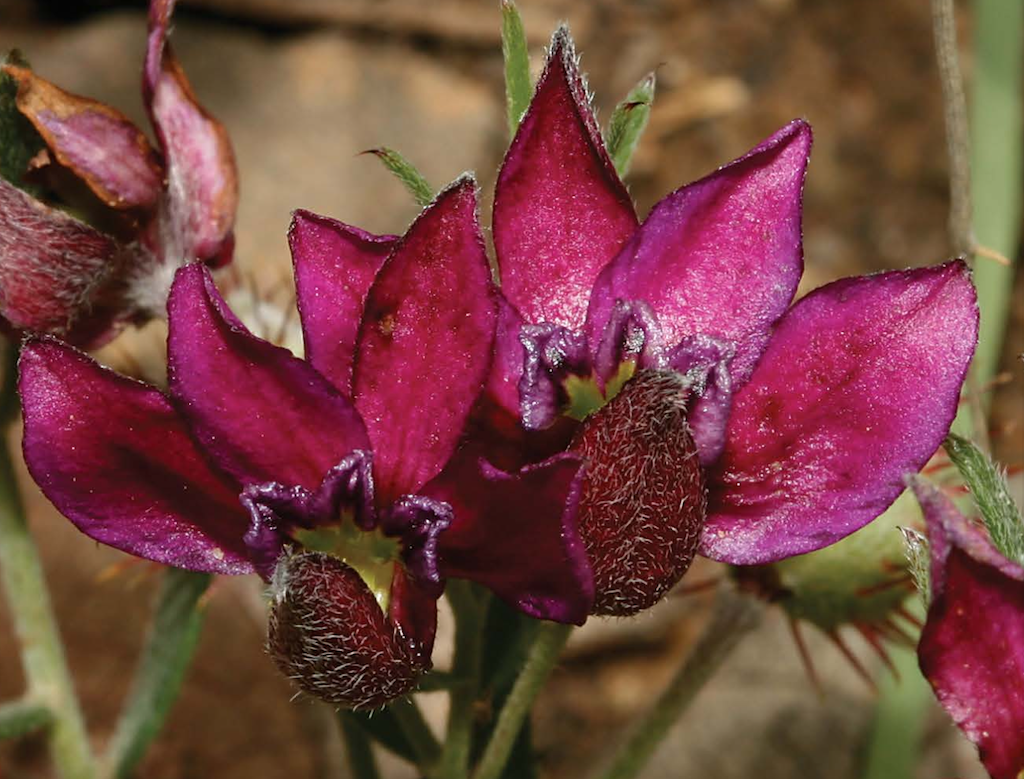
Chia: Native Americans have cultivated this plant along with corn; large plots of chia still flower where some ancient villages once stood. Indigenous Peoples have eaten the nutritious nut-flavored seeds and have made a minty beverage of ground seeds mixed with water. The tiny nutlets were soaked in water to make a sticky poultice used to treat fevers and wounds. Chia is a traditional food useful in treating diabetes.
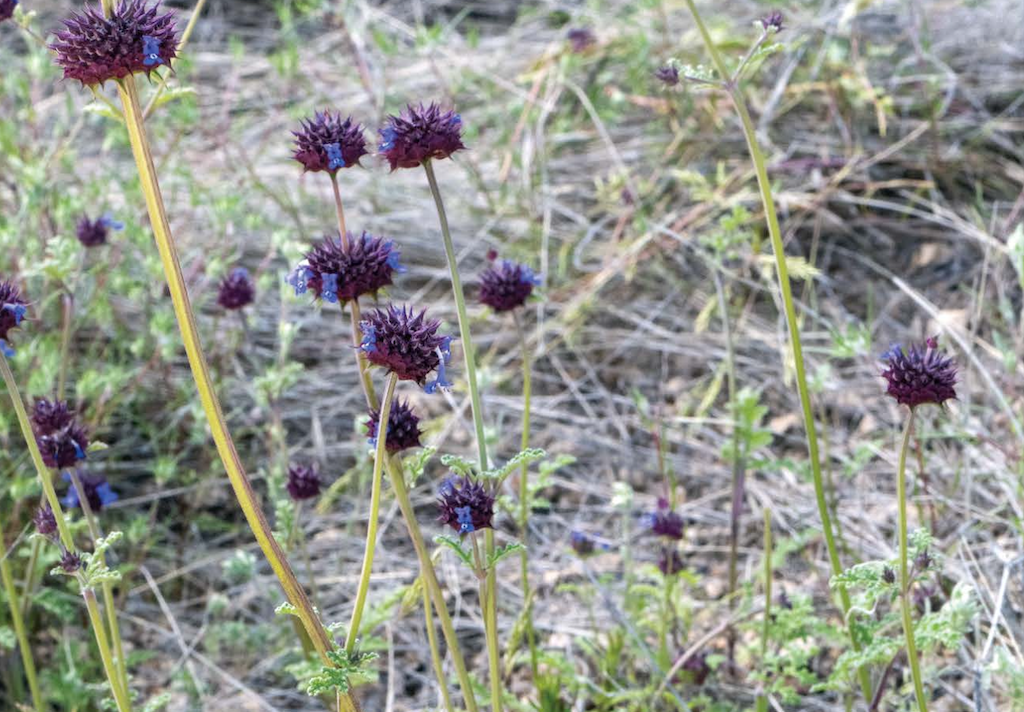
Orange Sneezeweed: Sometimes called owl-claws, this robust plant has long-blooming flowers that attract bees, butterflies, and moths. Avoided by rabbits, the leaves contain toxins that make them also unpalatable to cows and sheep. Historically, the crushed flowers were used to make a yellow dye.
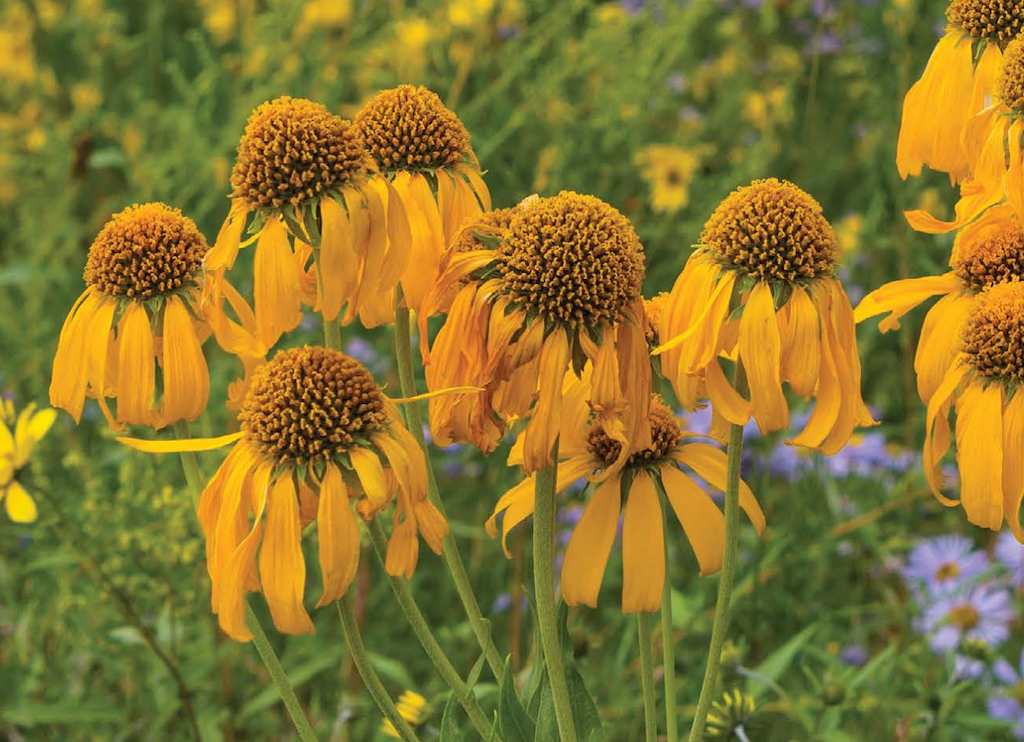
Butterflyweed: Also called butterfly milkweed, although it lacks milky sap. Found in clumps, the species name tuberosa refers to its large taproot, which makes it nearly impossible to transplant. Can be grown from seed. Single stems branch only near the top, and flower clusters harbor up to 25 flowers. Roots and stems have been used in folk medicine. It’s a host plant for gray hairstreak and monarch butterfly caterpillars.

Eastern Mojave Buckwheat: Many butterflies feed on the nectar of eastern Mojave buckwheat, and several species of butterfly caterpillars are dependent upon the foliage. Wild bees and honeybees also visit the flower, and it is an important wild nectar source used for honey production. Often cultivated in rock or butterfly gardens, this small, open, multistemmed shrub is easily grown from seed. Native Americans have used the plant medicinally to treat a variety of illnesses, including heart problems. Scientific studies have proven other species in the Eriogonum genus contain compounds that are beneficial to the heart. It’s also known as California buckwheat.
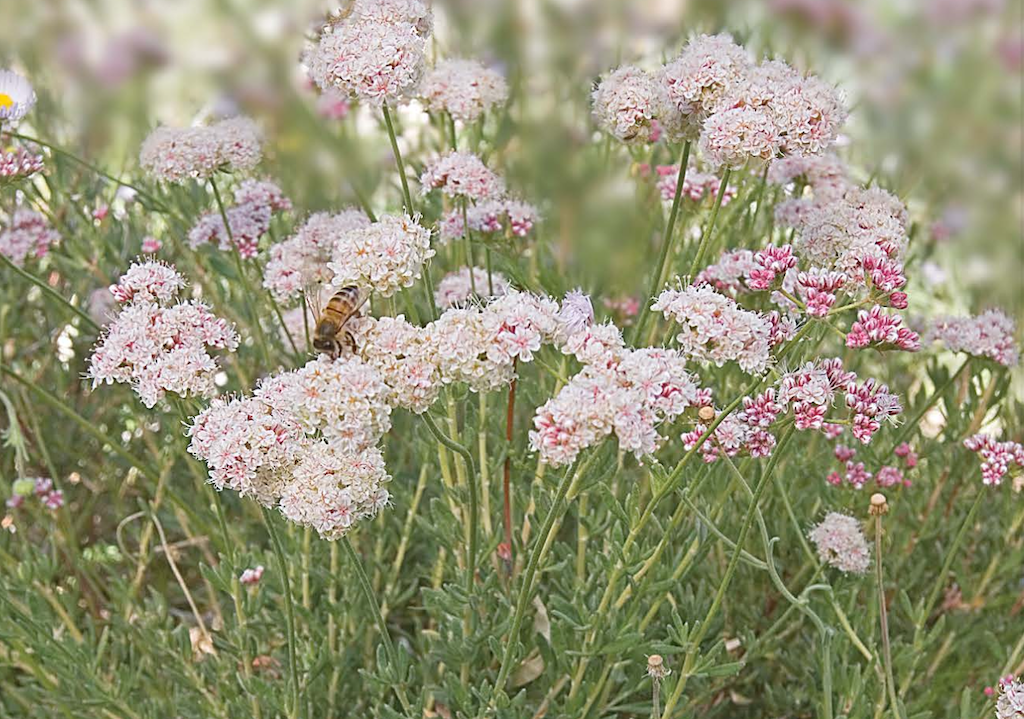
Arizona rose is the most widespread and abundant wild rose in the state. Its stout thorns, thick at the base and curving to a hooked point, resemble a cat’s claws. The red fruits (called rose hips) contain large amounts of vitamin C and protein and can be made into jams, jellies, and wine. If you live in the mountains of Arizona, plant this rose to attract wildlife. The rose hips persist over winter and are a food source for wildlife. Elk and deer eat the leaves, and the older woody stems provide cover for birds and small animals.
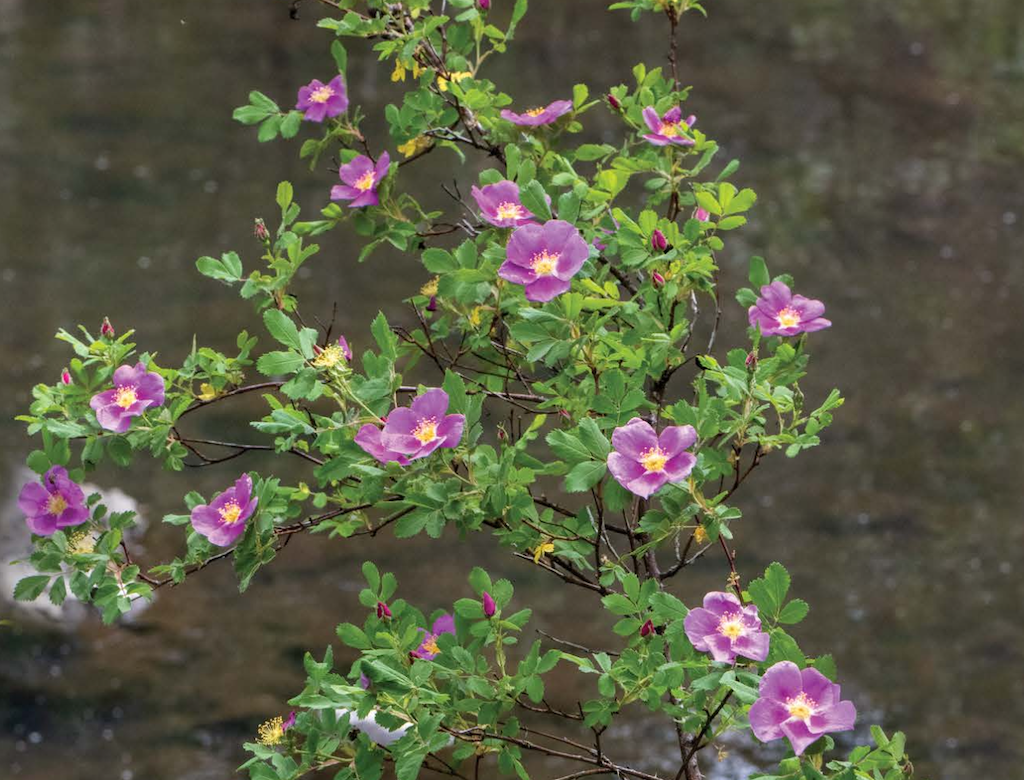
Rocky Mountain Bee Plant: This was a well-known plant to Navajo and other Native American tribes, who have used it in a variety of ways. The leaves have been cooked in meat stews or brewed into a tea to treat fevers and sore eyes. The seeds have been made into a mush or bread. A black paint has been made from the plant and has been used to decorate pottery.
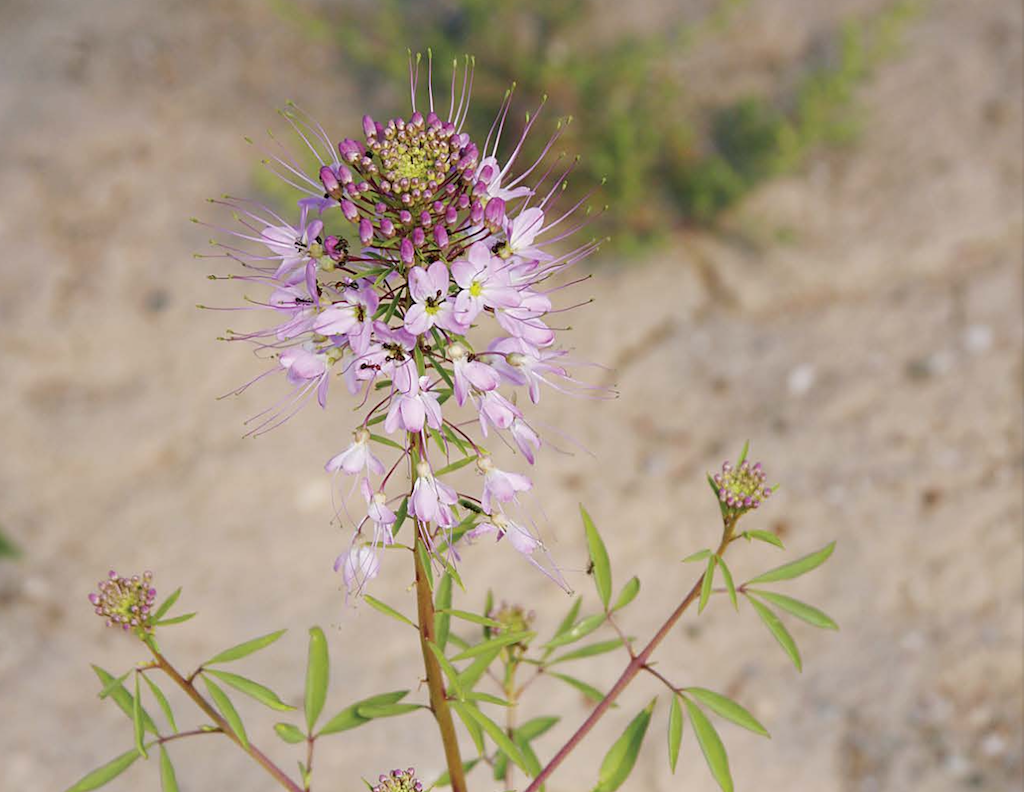
Silverleaf Nightshade: The grayish cast to the stems and leaves is from the covering of dense, star-shaped hairs. An invasive weed toxic to livestock, it spreads by deep underground stems, forming colonies that are hard to eradicate. The plant, which contains a digestive enzyme, has been combined with animal brain tissue and used to tan hides. Pima People have used the crushed fruit to curdle milk when making cheese.
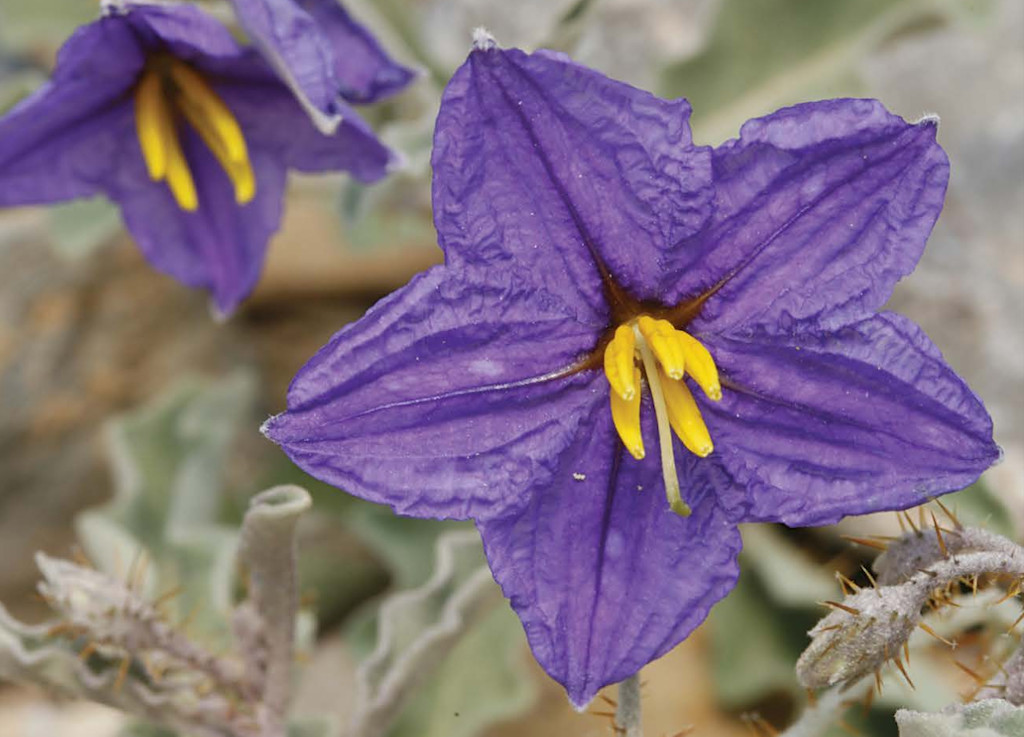
Trailing Four O’clock: This ground-hugging vine has what appears to be one regular round flat flower, but it actually has three irregular flowers that bloom at the same time. It blooms after rain in all but the coldest weather. It occurs wherever there is sandy soil, often in disturbed areas. The sticky, hairy leaves are usually dotted with sand. Indigenous Peoples have used this plant to treat swelling and fever, brewing it into a tea to treat diarrhea or kidney disease. It occurs throughout the Southwest.
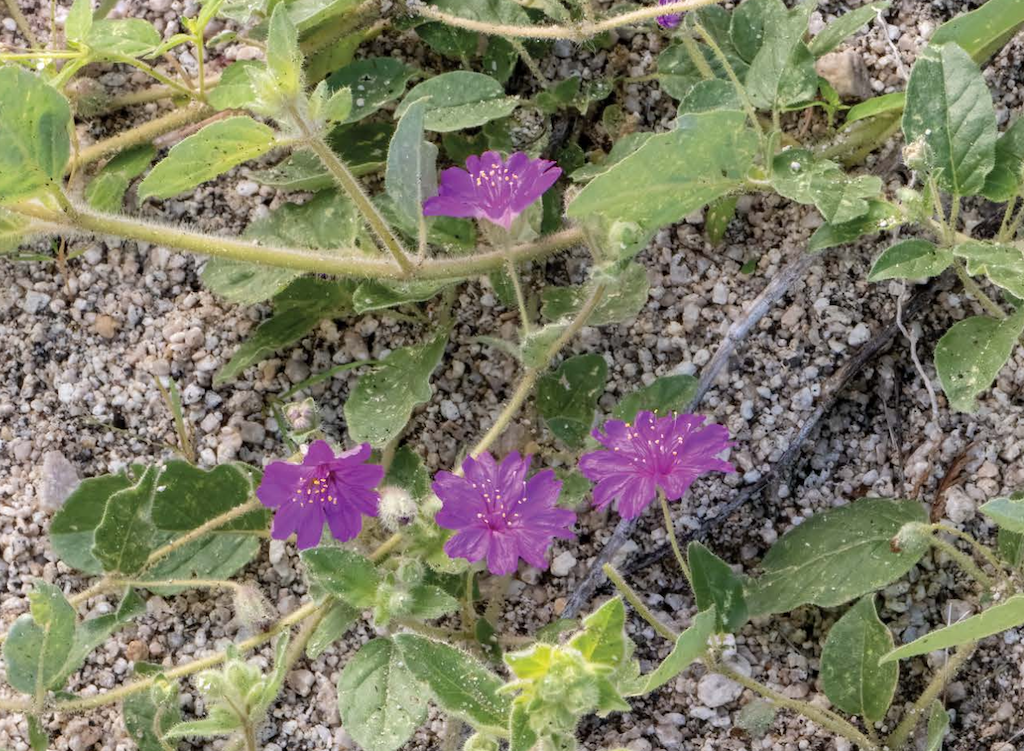
If you enjoyed this post, sign up for our newsletter. Order your copy of the book HERE. #bewellbeoutdoors



Annie Long
SO, so beautiful. I’ve eaten chia seeds but I never knew what the flowers looked like–sort of like chicory or batchelor buttons. In fact, I’ve only seen one of these flowers before and not in person.–the Silverleaf Nightshade. The blossoms looks like wrinkled paper flowers! I am always up for a book about flowers. I’ll definitely be ordering this book. Thanks for putting it on my radar!
Liliane Opsomer
It is indeed a beautiful book.